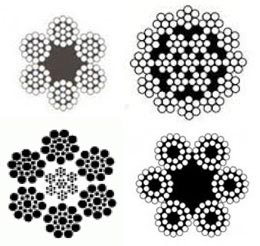
Many wire ropes are sold pre-lubricated, which means they are ready to be used almost immediately after being received. Although this initial lubrication job is sufficient to have ropes running smoothly for a significant amount of time, they eventually need more lubrication, or they run the risk of breaking. This pressure oxidizes the lubrication within the rope, meaning that lubrication must be added to ensure consistent performance.
What happens to wire ropes with inadequate lubrication?
While in motion, ropes are under almost constant pressure. The friction causes ropes to lose viscosity. Internal notching is the most common problem caused by excessive friction, but only for internal wires. A lack of proper lubrication causes an increase in crown wear for outer ropes. Although each rope is different, it is estimated that friction damage could cost a rope up to 20% of its anticipated service life. In some instances, it could even go to 30%. Wire ropes operating in warm and humid environments need extra lubrication because wire ropes can dry out in those conditions.
How do you know when to lubricate wire ropes?
Some ropes and products come with recommendations. If established lubrication policies do not exist, you can rely on the finger test. When ropes are not in operation, run your finger along a section of the rope (you can do this lightly). When you look at your finger, you should see a slippery film of oil. If not, your ropes are dry and in desperate need of lubrication.
Related Reading: